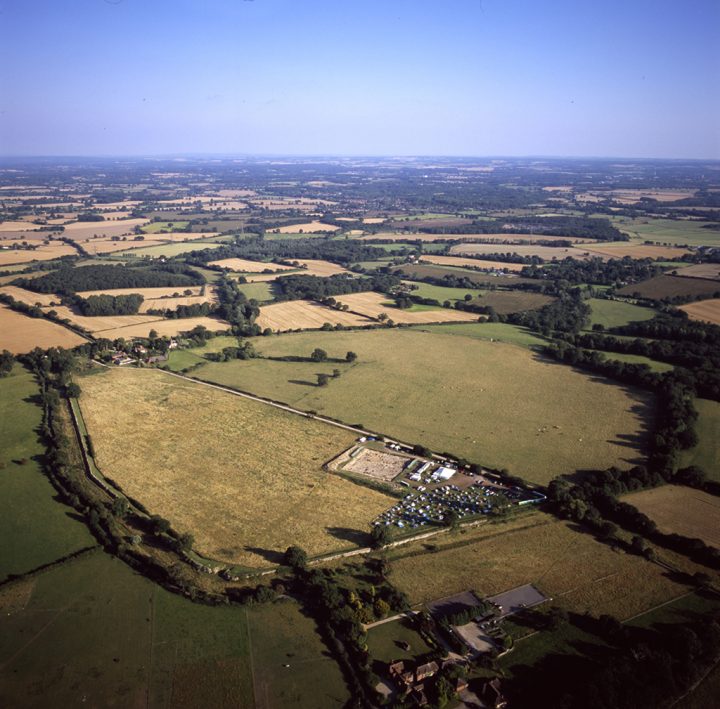A to Z of small finds
 This is an index to some of the small finds that have been excavated at Insula IX. Selecting the link will take you directly to the Integrated Archaeological DataBase record for the find.
This is an index to some of the small finds that have been excavated at Insula IX. Selecting the link will take you directly to the Integrated Archaeological DataBase record for the find.
Candlestick: SF583 is a copper alloy candlestick.
Ceramics: SF04119 is the base of a tiny ceramic vessel with a stamp on the underside. It is possibly from the east of Gaul. SF03192 is a ceramic rim sherd of mortaria. It is stamped ARINV and this may mean it is from the workshop of Marinus from Verulamium and dates to around 80-125AD.
Coin: SF04391 is a copper alloy coin dating to between 64-68AD. It features Nero as Caesar Augustus on one side and Victory holding a shield on the other. SF4706 is a copper alloy coin, a dupondius of Augustus. It was minted at Nemausus (modern Nimes) between 20BC and 14AD. It has been deliberately cut in half. Halving coins in this way was rare but sometimes occurred during the late Republican, Augustan and Tiberian times due to a shortage of new bronze coinage. SF03573 is a copper alloy coin dating to between AD287-90. It is unworn.
Cosmetic grinder: SF4834 is a copper alloy cosmetic grinder in excellent condition. It is of the end loop type with the stylised head of a water bird.
Dishes: SF3166 fragments of black burnish ware fish dish. Dates to late 2nd – early 3rd century.
Dice: SF04548 is a bone die, crudely made and quite worn. The spots have double concentric circles around them and all the sides add up to 7. SF05151 is also very worn so much so that some damage has been repaired in Roman times but there is still a large crack visible. Two of the sides are so worn that they can hardly be seen, it must have been used a lot! The sides also add up to seven.
Earrings: SF3787 is a cast, copper alloy, earring. SF4449 is a copper alloy earring dating to the 1st century AD made from one single length of wire coiled around itself, with the end forming the ear hook.
Finger rings: SF1607 is a copper alloy octagonal ring with no decoration. SF3822 is a copper alloy ring with the remains of a green glass setting. SF3984 is a complete iron ring with a carnelian intaglio. The engraving depicts a possible huntsman figure carrying a staff and a pig/deer. SF2535is a copper alloy ring with traces of enamelling. SF1621 is a silver ridged ring of the Late Roman period.
Furniture Fittings: SF2882 – iron ring, possibly furniture fitting. SF3165 bone hinge, possibly for wooden chest. SF4125 Copper alloy handle. 1st-2nd century AD. SF4345 Copper alloy stud, possibly from furniture.
Gaming counters: SF01260 is a small, opaque, black glass counter. SF3515 is an opaque yellow glass counter. The colour is unusual in Britain but was popular in the Augusto-Tiberian period on the continent. SF02978 is a bone gaming counter with a flat base and a concave obverse side. The top has a small hole in centre. The base has 5 small holes and a star etched into it. The side has XIII etched into it and this may mean 13 if the side with the star is the top. SF04114 is a pierced pottery counter of coarse fabric. It was made by grinding down a sherd of a pot. Although pierced, it is too light to be a loomweight.
Glass: SF04108 is a very fine green/blue, glass vessel handle with part of the rim still attached. SF03780 is the handle of a small globular bath flask that would have originally had two looped handles. It dates to around AD50-250.
Hairpin: SF3023 is a silver hairpin from between the 1st and 2nd centuries AD. The tip is a stylised hand with the thumb and first finger holding a ball that might represent a globe or fruit. SF3915 is a copper alloy hairpin. SF5040 is an iron hairpin.
Intaglio: SF2908 is an intaglio made of jasper, dating to the 2nd century and showing a portrait of a lady. SF4585 is an iron ring with remains of a yellow glass setting. It depicts the conjoined heads of a horse, boar and hound. This sort of depiction was designed to evoke prosperity and divert the evil eye. It may date to between the 1st century BC and 1st century AD. SF4676 is a cornelian intaglio set in an iron ring. It shows a female centaur facing a shrine, standing on a rocky outcrop and with her back to a tree.
Keys: SF3755 iron latch lifter. SF4117 iron slide key, very corroded. SF5350 iron key. SF1261 Iron tumbler lock lift key. SF01734 is a folding knife/razor with a zoomorphic ivory handle in the form of two mating dogs. It dates to the 2nd century.
Knives: SF4264 is a bone knife handle with part of the blade still attached. SF3753 is a virtually complete iron knife, although it is heavily encrusted.
Lamps: SF3037 lead open lamp slotted onto tripod candlestick, 2nd century.
Plaster: SF2967 Painted wall plaster, all dark red. Some pieces have dark and light green patterning or a thin yellow line. SF2200 Painted wall plaster, black and red.
Quernstones: SF4500 and SF4974 are fragments of quernstones, which would have been used to grind material such as grain. SF3535 shale tray.
Samian: SF04169 is a piece of Gaulish samian with SILVIP stamped on the base. This may represent the potter Silvius II of Lezoux.
Shoes: SF4411 is the leather remains of the upper part of a shoe.
Spoons: SF5074 is a bone spoon. SF2767 is a bone spoon of the 1st 2nd century. SF3052 is a bone spoon – you can see both the back and front views.
Steelyard arm: SF04551 is a possible iron steelyard arm. A rectangular sectioned arm leads in the centre to a curved section with a hole pierced through it, leading to the second arm which is square in section.
Strainers: SF2958 (the first three images) show a copper alloy strainer plate from a bowl, dating to around AD40-60. SF4290 is a copper alloy wine strainer.
Stopper: SF03876 is a possible bone stopper with two incised lines around the circumference on the top and bottom. It is very similar to SF03864, which also has incised lines.
Toilet Sets: SF05415 is a nail cleaner and ear scoop from a toilet set. SF03903 is a set of tweezers and ear scoop. SF02942 is a complete set dating to the 1st century AD.
Unguent jars: SF04017 is a complete rim from a conical glass unguent bottle. The glass looks almost clear as it is so thin but is actually a blue/green colour. It dates to around AD75-125. SF02814 is a complete ceramic unguent jar.


